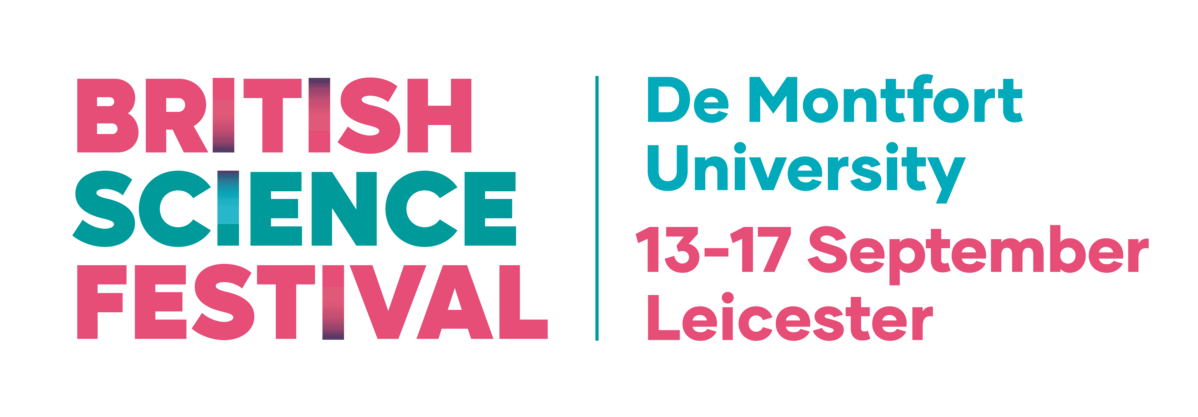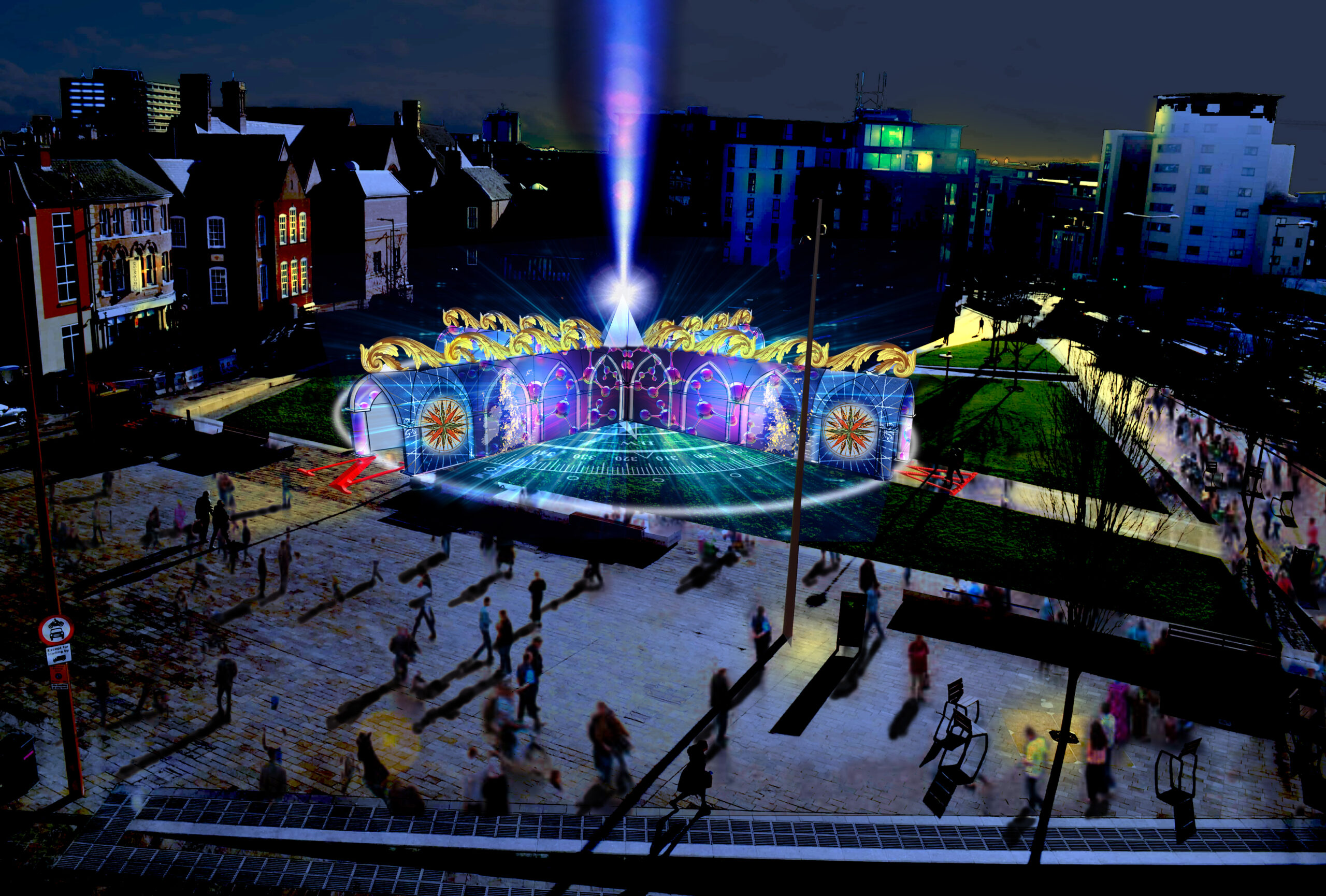The British Science Festival will be held in Leicester from 13 – 17 September, with many events taking place at De Montfort University. One of the main attractions during the Festival will be The Compass, which will be located on Jubilee Square.
This is your opportunity to immerse yourself in a unique and mesmerising walk through the various strands of scientific discovery. The Compass is a spellbinding installation driven by British research pioneers bringing to life how we navigate knowledge, and how scientific research can be a compass to guide our curiosity.
The Compass has been commissioned and created for Leicester and specially built to fit on Jubilee Square. The journey will offer attendees an opportunity to enter The Compass and interact with it using mini projectors, making each person’s experience of The Compass unique.
The Compass has been designed and created by Illuminos, and we caught up with Rob Vale to find out more about it all.
Where did the inspiration for The Compass come from?
We were interested in the idea of science research as a journey of discovery, of these voyages that researchers set out on, and how to capture that within a projection mapped art installation. One of the potential sites was Jubilee Square, and its crossing pathways happen to sit on approximate North, South, East, West lines. So we were looking at the plan view of the space, and thought that it looked something like a huge compass. As a metaphor for those ideas of journey and discovery, we thought that it was perfect, so we began to think how we could make it a reality.
How did you find the process for its design?
Its been a really interesting process, collaborating with M3 Industries on the build and Gray Matter AV on the projection and sound. Everything was led by the shape of the space, looking at trying to create a physical structure that sits along those walkways. We needed a piece that could function in two ways – as a space to go into by day, and as a space to circumnavigate by night. I had in my mind this idea of repeating modules, almost cloister or cathedral-like, that fit together to create avenues. Then these become the support structures for projection and sound that fills the space beneath your feet as you walk within them, putting the viewer directly into the content, it washing over them. Things like height and scale then flowed from that principle. Then what that allows for is this huge surface of eight sides with architectural features, that become the canvas for a full 360 degree projection after dark, where the whole structure comes alive with the stories and animations we’ve created with British Science researchers. Its a really challenging but really dynamic form to use projection mapping on, and very specific to Leicester and Jubilee Square.
The installation has been specially designed to stand on Jubilee Square, was that a challenge given the layout of the space?
It has been both a challenge and a template yes. It naturally restricts the parameters of the build structure, but it offers this opportunity to project on all sides, within a space where visitors can move all around it after dark, or into it and out of any exit by day. There’s various challenges around street lights, power, site etc but the teams from Inspirate, the British Science Festival and the Council have all worked really well together to support its creation and installation.
Tell us about the researchers as part of the project to create the narrative inside?
The researchers, alongside the young people in the BSF steering group, are the absolute heart of the work. We wanted to put their stories and their voices directly into the piece, and weave a narrative from those experiences, that follows the way a compass works, so based around origins and destinations, being sent off course, orientation and bearings. We were incredibly fortunate to be able to go and interview twenty extremely varied and extremely exciting researchers from right across British Science, recording the conversations, learning from them about both their research practices but also them as people and their journeys. We’ve moved through quantum physics, whale song, the metaverse, psychology, bioengineering, collaboration in nature, nuclear fallout zones, cancer cell division, and everything in between. So its been incredibly educational for us as well as really inspiring! This then comes together in the installation to produce a really beautiful, vibrant installation of animation and sound, where their experiences all dovetail together into a celebration of British Science research at its best.
The Compass is open in both the daytime and evening, will it be a different experience depending on when in the day you visit?
Yes its a very different experience. It has this core narrative and all these shared elements of content by day and night, but by day you are inside the piece, directly within the projection, and able to see all the details and nuances within the piece. You can move down the different arms of the compass, exploring it, discovering different elements and hearing different moments. There are also mini projectors you can carry with you, each with a different researcher contained within it, to be revealed at certain points in the structure. Then by night the epic scale and spectacle really open up, and you can experience the bigger picture of this whole building shifting and changing, content flowing from archway to archway, with the whole space animated and alive.
How much of a privilege is it to be part of the British Science Festival?
Its a real honour actually. As artists we’re rarely given such an insight into the scientific community, and our work brings in so many aspects of science, technology, computing, physics, audio and so on, which were great to explore with so many experts. Its an incredible event full of wonderful talks and discussions, events and collaborations, and we hope The Compass is a fitting tribute to that ingenuity and fantastic journey that British Science research continues to discover.
How would you describe The Compass in 5 words?
Navigating knowledge – science as discovery
_____
When can you visit?
The Compass will be open on Jubilee Square from Tuesday 13 – Saturday 17 September 2022. The opening hours are:
Tuesday 13 September: 11am – 6pm
Wednesday 14 – Saturday 17 September: 11am – 10pm
The Compass is a drop-in activity and pre-booking is not required. Entry is free for all attendees.
For further information on The Compass and all other events as part of British Science Festival 2022 please visit britishsciencefestival.org.


